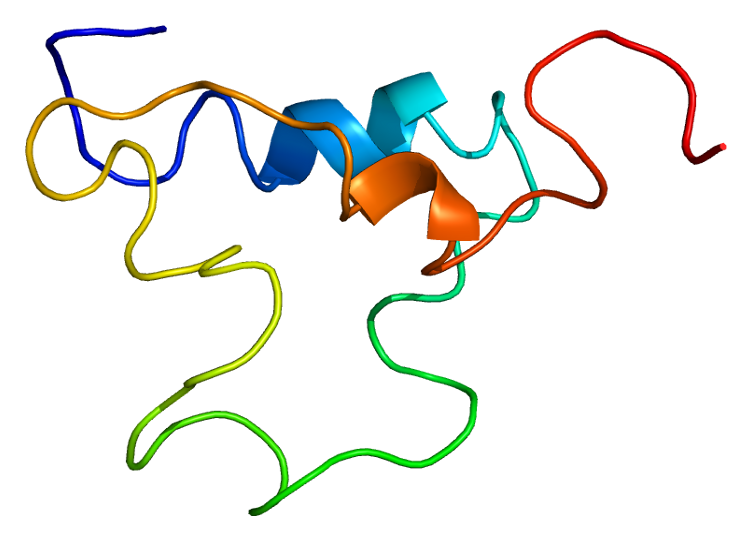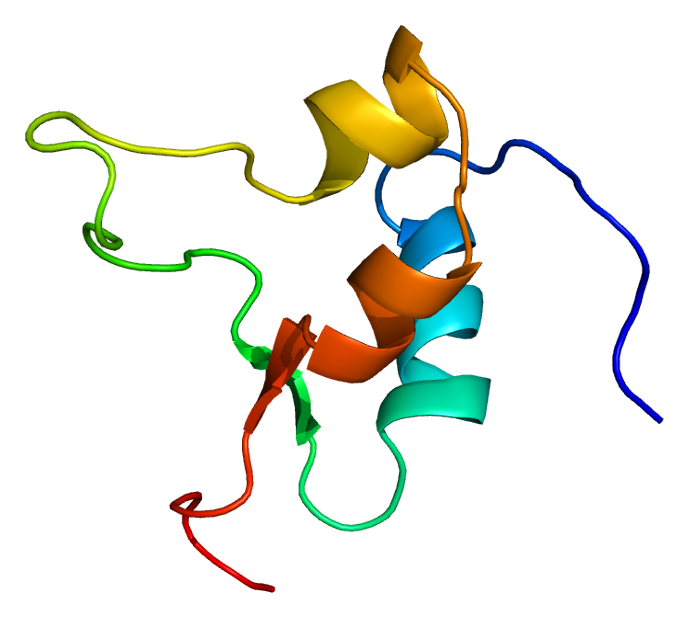Difference Between IGF1 and IGF2
Table of Contents
The key difference between IGF1 and IGF2 is that IGF1 is a major growth factor in adults, while IGF2 is a major growth factor in the fetus.
Insulin-like growth factor 1 (IGF1) and insulin-like growth factor 2 (IGF2) are two peptide hormones that work similar to the insulin hormone. Both hormones can stimulate growth and decrease blood glucose levels. Though both these act similar to insulin, both are less potent than insulin. However, IGF1 and IGF2 play multiple roles, regulating vital metabolic and development processes. They especially control growth and differentiation events, including bone elongation and cell division. IGF-binding proteins can regulate or inhibit both these hormones.
CONTENTS
1. Overview and Key Difference
2. What is IGF1
3. What is IGF2
4. Similarities Between IGF1 and IGF2
5. Side by Side Comparison – IGF1 vs IGF2 in Tabular Form
6. Summary
What is IGF1?
IGF1 is a peptide hormone primarily produced by the liver. It is structurally similar to insulin. Growth hormone stimulates the production of IGF1. Its production takes place throughout life, but it is optimal during pubertal growth.

Figure 01: IGF1
IGF1 plays an important role in the metabolism of glucose together with insulin. In order to act, it is necessary for IGF1 to bind with its receptor called IGFR-1. Other than the metabolism of glucose, IGF1 is essential for normal growth and development, neuron survival, myelin sheath synthesis, astrocyte function, vessel growth, neuronal excitability and oligodendrogenesis.
What is IGF2?
IGF2 is the second peptide hormone that shares similarities with insulin. IGF-2 is the major growth promoting hormone during gestation. It also participates in the regulation of cell proliferation, growth, migration, differentiation and survival.

Figure 02: IGF2
Moreover, IGF2 plays a role in the development of a variety of seemingly unrelated cancers such as breast cancer, colon cancer and lung cancer, etc. Similar to IGF1, IGF2 also binds with IGF-1 receptor in order to exert its effects.
What are the Similarities Between IGF1 and IGF2?
- IGF1 and IGF2 are insulin-like growth factors.
- Both of them are peptide hormones.
- Also, they are single chain polypeptides.
- Moreover, they are pleiotropic hormones that have multiple roles in regulating vital metabolic and developmental processes related to growth and differentiation.
- Besides, they are present in the circulation and can be detected in plasma.
- Furthermore, since they are ligands, they exert their effects by binding with their own specific receptors.
- Both IGF1 and IGF2 bind with IGFR-1.
What is the Difference Between IGF1 and IGF2?
Both IGF1 and IGF2 are insulin-like growth factors. IGF1 is a major growth factor in adults, while IGF2 is the major growth promoting hormone during gestation. So, this is the key difference between IGF1 and IGF2. Moreover, the place of production too creates a difference between IGF1 and IGF2. IGF1 production primarily occurs in the liver. But, IGF2 production occurs in a wide variety of somatic tissues during the early embryonic stage.
Furthermore, IGF1 production is highly dependent on the secretion of growth hormone while IGF2 production is less dependent on the growth hormone. Therefore, this is also a difference between IGF1 and IGF2.

Summary – IGF1 vs IGF2
There are several insulin-like growth factors. Although they are less potent than insulin, they are very important for growth and differentiation. IGF1 and IGF2 are two such types. IGF1 is an important growth hormone during childhood and adulthood, while IGF2 is an important growth hormone during the fetal stage. So, this is the key difference between IGF1 and IGF2.
Reference:
1. Bergman, Daniel, et al. “Insulin-Like Growth Factor 2 in Development and Disease: A Mini-Review.” Gerontology, Karger Publishers, 20 Dec. 2012, Available here.
2. Utiger, Robert D. “Insulin-like Growth Factor.” Encyclopædia Britannica, Encyclopædia Britannica, Inc., 7 Feb. 2011, Available here.
Image Courtesy:
1. “Protein IGF1 PDB 1bqt” By Emw – Own work (CC BY-SA 3.0) via Commons Wikimedia
2. “Protein IGF2 PDB 1igl” By Emw – Own work (CC BY-SA 3.0) via Commons Wikimedia
ncG1vNJzZmivp6x7pbXFn5yrnZ6YsqOx07CcnqZemLyue8OinZ%2Bdopq7pLGMm5ytr5Wau261xp9oZpmemXqqs8VrZg%3D%3D